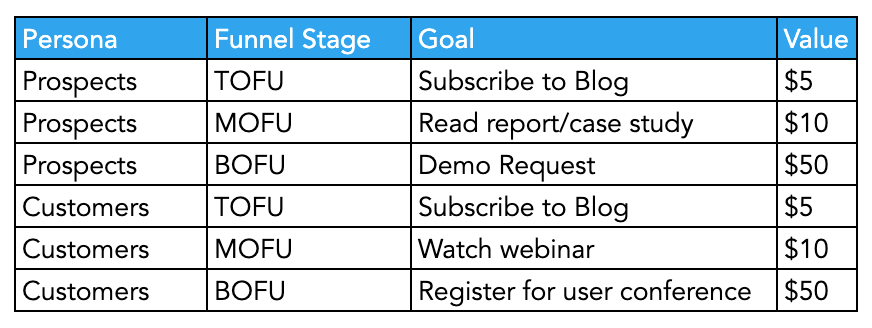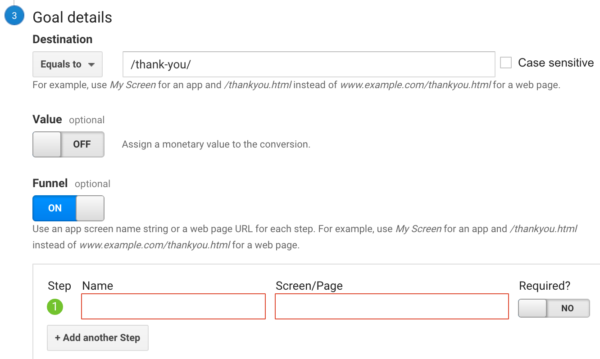Debunking Google Analytics Limitations: Discover What Information Goals Can not Track
In the realm of electronic analytics, Google Analytics stands as a powerful tool that gives beneficial insights right into site efficiency and individual habits. From the intricacies of customer interaction with dynamic material to the complexities of cross-device customer journeys, these restrictions lost light on areas that might remain obscured from traditional analytics viewpoints.

Individual Interaction With Dynamic Material
User interaction with vibrant content plays a crucial role in comprehending individual behavior on sites and maximizing the general user experience. By tracking customer interactions with dynamic content, site owners can acquire valuable insights into user involvement, choices, and behaviors - what data is google analytics goals unable to track.
Google Analytics provides various devices to track individual interactions with vibrant material, such as event tracking and online pageviews. Event monitoring allows you to keep an eye on certain user activities, like clicking a button or seeing a video, offering information on exactly how users connect with vibrant aspects.
Cross-Device User Journeys
Just how can modern analytics devices track the complicated paths customers take across multiple tools in their online trips? Cross-device individual trips present a substantial difficulty for monitoring and analyzing customer behavior precisely. As customers communicate with apps or web sites using numerous tools such as mobile phones, desktop computers, and tablet computers, it ends up being essential to recognize just how they relocate between these platforms to maximize user experience efficiently.
Google Analytics encounters constraints in tracking cross-device customer trips as a result of personal privacy problems and technical restraints - what data is google analytics goals unable to track. While it can give understandings right into specific gadgets' interactions, tracking a seamless user trip throughout several tools remains a challenge. This constraint can cause insufficient data and fragmented user insights, making it difficult for businesses to develop a unified sight of the consumer trip
To resolve this concern, services can use sophisticated analytics devices that use cross-device monitoring capabilities, allowing them to obtain a much more all natural understanding of user actions. By leveraging these devices, services can link the void in tracking cross-device individual journeys and maximize their digital techniques for a seamless customer experience.
Offline Conversions and Acknowledgment
As companies navigate the obstacles of tracking cross-device customer journeys, an additional essential element to consider is the world of offline conversions and acknowledgment in the world of data analytics. While Google Analytics gives important understandings right into on the internet user actions, it falls short when it involves tracking conversions that happen offline. This restriction positions a significant difficulty for businesses that have both online and offline sales networks.
Offline conversions, such as acquisitions made in physical shops or with telephone call centers, are vital to understanding the complete consumer journey. Without the capability to attribute these offline conversions to certain on-line communications, companies might struggle to precisely gauge the effect of their digital advertising and marketing efforts.
To address this void, businesses can discover alternative options such as incorporating CRM systems with online analytics tools or using distinct coupon codes that can be traced back to online campaigns. By connecting the gap between online and offline data, services can obtain a more extensive understanding of their customers' behavior and boost their total advertising approaches.
Person Customer Identification
In the realm of data analytics, the webpage ability to properly recognize specific customers throughout various on the internet touchpoints is a vital obstacle for businesses seeking to personalize and optimize their advertising and marketing strategies. While Google Analytics offers important insights into user habits and communications, it falls short in enabling the identification of particular people as a result of personal privacy worries and technical restrictions. Google Analytics uses one-of-a-kind identifiers such as cookies to track customer sessions and actions, however these do not correspond to identifying private users in a personal sense.

Information From Secure Pages
Despite the boosting occurrence of safe and secure web pages navigate here on web sites, obtaining information from these encrypted sources offers a distinct obstacle for electronic analytics platforms like Google Analytics. Protect pages, suggested by HTTPS in the link, encrypt data exchanged between the individual's web browser and the internet site's server to ensure privacy and security. While this security is crucial for securing delicate information, it likewise postures restrictions for tracking individual actions and gathering analytics information.
Google Analytics encounters obstacles in gathering comprehensive details from secure pages as a result of the encryption procedures in area. Because of this, specific information points such as referral sources, keyword searches, and also some customer interactions might not be totally recorded when users access a web site via a secure connection. This restriction can affect the precision and efficiency of the data analysis, resulting in spaces in recognizing individual actions and choices on secure pages.
To navigate this challenge, digital experts might need to discover different tracking methods or take advantage of various other devices particularly created to collect insights from safe web pages. By adjusting methods to fit these restrictions, organizations can still obtain useful analytics despite the restraints offered by encrypted links.
Verdict
In conclusion, Google Analytics has restrictions in tracking customer interaction with dynamic content, cross-device user trips, offline conversions, specific user identification, and information from safe and secure web pages. These limitations hinder a comprehensive understanding of user behavior and might cause spaces in data analysis. In spite of its important understandings, Google Analytics might not offer a complete photo Clicking Here of user engagement across different touchpoints. It is vital for companies to be conscious of these limitations and consider auxiliary devices for a more all natural sight of their information.
User interaction with vibrant material plays an important duty in comprehending customer behavior on websites and maximizing the overall individual experience. By tracking customer interactions with dynamic web content, web site owners can acquire beneficial insights into individual interaction, choices, and behaviors.
Google Analytics utilizes one-of-a-kind identifiers such as cookies to track user sessions and habits, yet these do not relate to identifying individual users in a personal feeling.
As an outcome, certain data factors such as recommendation resources, keyword searches, and also some customer interactions may not be completely recorded when customers access a site via a safe and secure connection.In final thought, Google Analytics has limitations in tracking user interaction with dynamic material, cross-device individual trips, offline conversions, individual customer recognition, and information from safe and secure web pages.